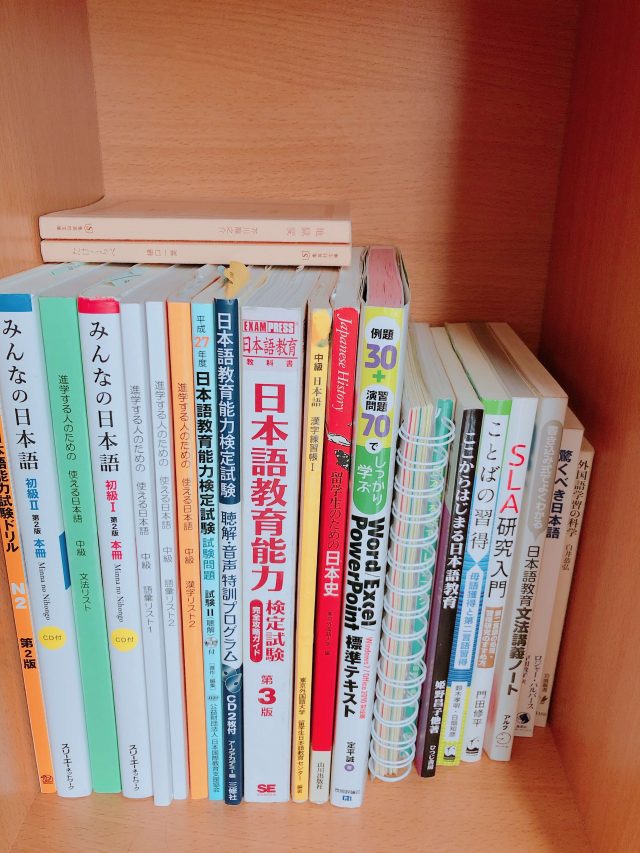Hajimemashouka aka let’s start!
Japanese Language Study Starter Pack For Beginners
A little background
Before I start, let me introduce myself first. I’m a Malaysian who is currently in my 2nd year working at one of the traditional Japanese companies in Tokyo. I took a 1-year Japanese program at a Japanese language school in Shinjuku before moving to the beautiful, quiet countryside Himeji for my degree. So, in total, I have been in Japan for 6 years and this year marked my 7th year in Japan.
Putting my Japanese fluency aside, I majored in Japanese Language and Linguistics plus minored in Teaching Japanese as Foreign Language. I know I don’t look like one but my main reason why I decided to study abroad in Japan is to become a Japanese language teacher in Malaysia lol.
YOU MIGHT ALSO LIKE
Related: What Has Changed After I Graduated College And Start Working
Japanese language 101
The first thing you need to know about the language is that the Japanese don’t have their own writing system. Instead, they adopted Chinese characters, Hanzi as their writing system and called it Kanji. Later, Hiragana and Katakana are created from the characters to make up for certain Japanese words that have no Kanji equivalent.
Hiragana
|
Katakana
|
Kanji
|
Romaji
|
Japanese language study starter pack – How to start
Okay, Rasya how do I start?
1. Create a goal
First, create a goal. What bring you here? Why do you want to learn Japanese? Ask yourself questions.
Everyone knows that learning a language is not easy. More so when you learn it by yourself. Perhaps you want to be able to watch anime or drama without subtitle or you want to study in Japan, it could be anything so try to list all of the small goals and big goals you want to accomplish then choose one clear main goal.
Why?
Because it is the most crucial part of your learning journey. Your goal would decide how many times you’re going to study, the time you need to accomplish it, and your study plan.
2. Make a study plan
If you fail to plan, you are planning to fail.
Benjamin Franklin
A study plan is an outline/schedule towards accomplishing your learning goals. I recommend dividing it by day, week, month, and year. You can review and tailor it based on your needs.
For example, when I started my Japanese study at JASSO (my Japanese language school), my goal is to enter a Japan university. And to enter Japan university I need:
- Minimum JLPT N2 level
- Score at least average in EJU (Entrance Japan University) exam
- Use the EJU score to apply for university admission that is recognized by the Malaysian Board of Education (I’m a scholarship student and this is the requirement that is put by my scholarship provider)
YOU MIGHT ALSO LIKE
Related: Life In Japan | Making The Most Of Last College Festival
I came to Japan in April 2013 and the EJU exam is in November means I only have around 7 months to cram everything into my tiny brain.
My schedule is pretty straight forward but a bit intense.
- I went to school from 9 to 4:30 pm with an hour break.
- After school is over I’d walk back to my dorm (dormitory is in the same compound with the school. No need to brace the hellish rush hour in Shinjuku station)
- I’d rest a bit, did my homework, revise for tomorrow’s lessons, and practice my Kanji. The same schedule is repeated every single day except weekend because that’s my ‘I want to have fun and forget all about Kanji, grammar, etc.‘ day
Without my classmates, I’d have close to zero social life due to the pressure of wanting to go to university. If I fail, I’d be sent back to Malaysia and imagine the humiliation. Gah, it was so stressful back then to the point that I lose weight.
Back to the point, this is not something that self-learners could easily do. Not all of us are students and have the luxury to only focus on studying which is why you need to make the best and realistic study plan for you.
3. Find your resources (free, paid or both)
Thanks to the internet, learning foreign languages, programming, design basically anything nowadays is effortlessly easy as with a one google search, you can find a lot of useful advice, tips, and even free resources. Below are some of the resources that I found from study Tumblr and browsing Reddit. I also shamelessly put my ‘the still in progress master list but I published it anyway’ from the tab ‘Learn Japanese’ or click here.
- Language resources
- Step-by-step kanji — Resources List
- FAQ Resources
- Aozora Bunko for reading materials
- Learn Japanese/reddit
- Masterposts about resources
- Japanese Language Masterlist by yours truly *wink*
4. Pick a textbook
I’ve seen Minna no Nihongo and the Genki textbooks as one of the most recommended textbooks for self-learners. My advice is to take a look at textbooks that you could find and pick the one that you find the most interesting. Make sure that the textbook is equipped with a CD for listening practice. I do have the link for Japanese language resources (textbooks, audios, etc.) but I don’t remember the source. It would be rude to put the link here without quoting the original source but if you want the link give me a DM.
5. Master the basic writing system aka the Kanas (Hiragana and Katakana) first
This is the basic of the basic. To learn a language, mastering the writing system is a must. Forget about Kanji and learn Hiragana and Katakana first.
I found a website called Penji Mikata that provides free Hiragana, Katakana, and even Kanji practice sheets from this Youtube video. The website is in Japanese but I’ve compiled the link to the practice sheets that you can find below:
6. Use apps as supplementary lessons
The apps that I used:
YOU MIGHT ALSO LIKE
- Duolingo
- Imiwa (dictionary)
- Hello Talk
- Memrise
7. Follow Youtubers to improve your listening skills
There are a lot of Youtubers that I follow but Bilingual Chika, Lindie Botes and Kemushi chan are my favourites. Lindie especially amazes me with her language skills. Like how many languages can you speak?
- Bilingual Chika
- Lindie Botes
- Kemushi chan
8. Watch variety shows to learn real Japanese outside the textbook
My recommendations are VSArashi, Konya Kurabe, Hirunandesu and Terrace House that you can found on Netflix as it shows how the real Japanese speaks. The flow, the subtle culture difference of 言い回し、iimawashi that you could not learn from the textbook.
JLPT Test
So if you start learning Japanese you’d definitely heard about JLPT. JLPT is a Japanese Language Proficiency Test comprised of 5 levels from N5 being the lowest to N1 being the highest difficulty level.
You can find more information on the exam here. For Japan university graduates, during job hunting, companies usually ask for N2/N1 level. Therefore, if you want to increase your job prospects, pass the N1 and you’re all set.
Extra: Study plan PDF (Freebies)
A blue and pink weekly study plan that I created using Canva. Click below to download.
Blue Weekly Study Plan|Pink Weekly Study Plan
Okay, now you’ve finished reading the post what else are you waiting for? Start doing. The future is now. There is no shortcut in learning a language. It’s not going to be easy. There are days that you feel like you’re not making progress and want to quit. BUT, as cliche as it is, it’s going to be worth it. If you’re feeling burn out take a break. The kanji is not going anywhere.
If you’ve any questions etc. feel free to give me a comment or DM. I’m working full time from 9 to 6 so please understand that the replies are going to be slow *wink* Also, if someone needs a language/study partner I’m pretty open for a video/skype session *Applicable for girls only*














2 comments
Kenapa I rasa lagi complicated hahahahah. I macam clueless gilaa T___T
Baru semangat nak belajar new language. Semalam when they announced my posting at uni might got delayed again, I macam ” Ok, you need to learn new language, Ariena. ”
Terus I teringat your post about this.
Complicated ke? Hahhaha.
Senang je first kena memorize, hiragana and katakana first pastu boleh gradually belajar kanji and grammar.